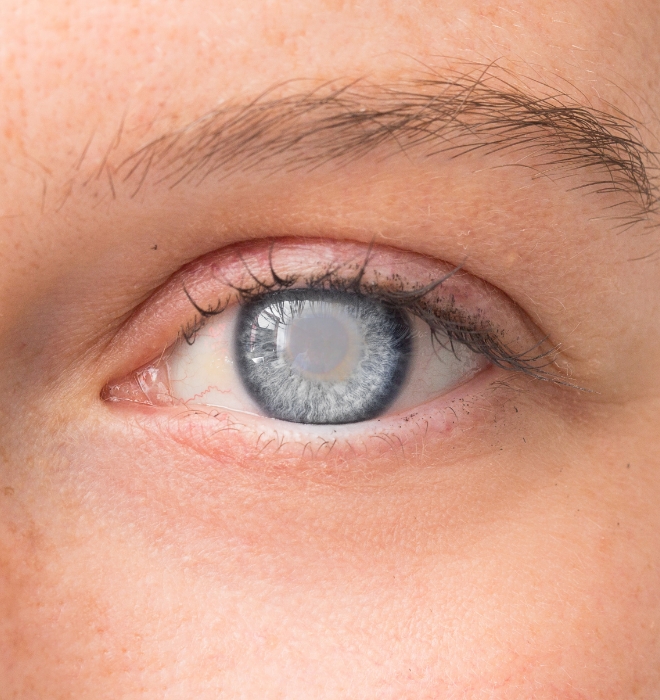Service & Facility
Service & Facility
Cataracts - Restoring Clarity
to Your Vision

Introduction:
Cataracts impair vision by clouding the eye’s natural lens, causing difficulties in seeing details clearly.
Similar to a foggy camera lens, cataracts make it challenging to perceive objects sharply.
Causes of Cataracts:
Cataracts can develop due to:
Normal aging.
Eye injuries or previous eye surgery.
Certain medications.
Risk factors include excessive sunlight exposure, smoking, cortisone use, diabetes, high blood pressure, and excessive alcohol consumption.
Common Symptoms of Cataracts:
Clouded, blurred, or dim vision.
Impaired night vision or sensitivity to light and glare.
The need for brighter light when reading or performing activities.
- Seeing “halos” around lights and frequent changes in eyeglass or contact lens prescriptions.
Fading or yellowing of colors and double vision in a single eye.

Cataracts - Restoring Clarity
to Your Vision
Introduction:
Cataracts impair vision by clouding the eye’s natural lens, causing difficulties in seeing details clearly.
Similar to a foggy camera lens, cataracts make it challenging to perceive objects sharply.
Causes of Cataracts:
Cataracts can develop due to:
Normal aging.
Eye injuries or previous eye surgery.
Certain medications.
Risk factors include excessive sunlight exposure, smoking, cortisone use, diabetes, high blood pressure, and excessive alcohol consumption.

Common Symptoms of Cataracts:
Clouded, blurred, or dim vision.
Impaired night vision or sensitivity to light and glare.
The need for brighter light when reading or performing activities.
- Seeing “halos” around lights and frequent changes in eyeglass or contact lens prescriptions.
Fading or yellowing of colors and double vision in a single eye.
Types of Cataracts:
1. Age-related cataract:
Most cataracts are associated with aging.
2. Congenital cataract:
Some babies are born with cataracts or develop them in childhood.
3. Secondary cataract:
Linked to certain health problems like diabetes or corticosteroid use.
4. Traumatic cataract:
Can occur soon after an eye injury or years later.
Diagnostic Tests:
- A comprehensive eye exam helps diagnose cataracts.
- Additional tests or procedures may include:
- Visual acuity tests to evaluate impaired vision.
- Slit lamp exams to magnify and identify abnormalities.
Retinal exams to check for signs of cloudiness in the lens.
Treatment Options:
- Cataract Extraction Surgery:
- Surgical removal of the clouded lens is the most effective treatment.
- Phacoemulsification procedure involves breaking up and removing the cataractous lens through a small opening.
- An artificial intraocular lens (IOL) replaces the removed lens.
Different IOL options are available based on individual needs and preferences.
Types of Cataracts:
1. Age-related cataract:
Most cataracts are associated with aging.
2. Congenital cataract:
Some babies are born with cataracts or develop them in childhood.
3. Secondary cataract:
Linked to certain health problems like diabetes or corticosteroid use.
4. Traumatic cataract:
Can occur soon after an eye injury or years later.
Diagnostic Tests:
- Cataract Extraction Surgery:
- Surgical removal of the clouded lens is the most effective treatment.
- Phacoemulsification procedure involves breaking up and removing the cataractous lens through a small opening.
- An artificial intraocular lens (IOL) replaces the removed lens.
Different IOL options are available based on individual needs and preferences.
Treatment Options:
- A comprehensive eye exam helps diagnose cataracts.
- Additional tests or procedures may include:
- Visual acuity tests to evaluate impaired vision.
- Slit lamp exams to magnify and identify abnormalities.
Retinal exams to check for signs of cloudiness in the lens.
Types of Intraocular Lenses (IOLs):
1. Monofocal Fixed Focus IOLs:
- Correct distance vision, but reading glasses may be required.
Monovision technique may be used to focus one eye for near vision and the other for distance vision.
2. EDOF (Extended Depth Of Focus) IOLs:
- Offer good distance and usable intermediate vision, suitable for computer work.
Some individuals may need reading glasses for small print.
3. Toric IOLs:
- Correct astigmatism, providing better distance or near vision than non-Toric IOLs.
4. Trifocal and Multifocal IOLs:
- Provide vision correction for distance, intermediate, and reading.
- Additional glasses may be needed for specific working distances.
Possible side effects include halos around lights at night and reduced vision in bright or dim light.
Conclusion:
Restore clarity to your vision with cataract extraction surgery and intraocular lens replacement.
Consult with our skilled ophthalmologists to determine the most suitable IOL option for your needs.
Enjoy improved vision and regain the freedom to see the world clearly.
